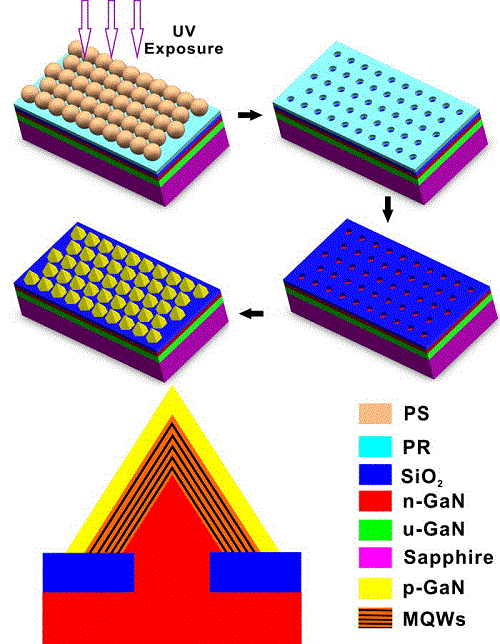A novel nanopattern technique of nanospherical-lens photolithography is introduced to fabricate the InGaN nanopyramid white (NPW) light-emitting diodes (LEDs) by selective area growth. Highly ordered NPW LED arrays are achieved after optimizing the growth conditions. It is found that the NPW LEDs vary from warm white light to cool with the increase in growth temperature.
 |
|
Schematic illustrations of the fabrication process flow for phosphor-free nanopyramid LEDs by the NLP method. (graphic courtesy of Journal of Applied Science) |
For the cool white NPW LEDs, the spectrum is similar to the conventional white LEDs obtained from the blue LEDs combined with yellow phosphors. The blue emission originates from the upper sidewalls of nanopyramids, and yellow light is mainly emitted from the lower ridges with respect to the base of nanopyramids. Furthermore, simulation shows that the light extraction efficiency of NPW LEDs is about 4 times higher compared with conventional ones, and the escape cone is as much as 85° due to their three-dimensional nanopyramid structures. These observations suggest that the proposed phosphor-free NPW LEDs may have great potential for highly efficient white lighting.
To read the rest of the report, please refer to the following link: Fabrication and optical characteristics of phosphor-free InGaN nanopyramid white light emitting diodes by nanospherical-lens photolithography












